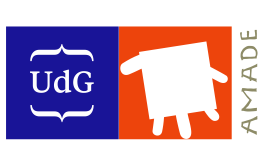
05 Mar Paper on high velocity impact response of carbon/epoxy composite laminates at cryogenic temperatures
Researchers of the Universidad Carlos III de Madrid (J. Pernas-Sánchez, J.A. Artero-Guerrero, J. López-Puente) and AMADE-UdG (S.M. García-Rodríguez, J. Costa) have recently published the paper entitled “High velocity impact response of carbon/epoxy composite laminates at cryogenic temperatures” at the journal Composites: Part A 168 (2023) 107456: https://doi.org/10.1016/j.compositesa.2023.107456
Composite laminates are subjected to cryogenic temperatures in exposed aircraft structures during flight or in cryogenic tanks. The combination of cryogenic temperatures and high velocity impacts represents a threat to their integrity. This work investigates the behavior of carbon–epoxy laminates under high velocity impacts (from 70 to 500 m/s) at room and cryogenic (-150 ◦C) temperatures and under two different plate orientations with respect to the projectile direction. The damage pattern of impacted specimens at low temperature, revealed by C-scan and X-ray tomography, exhibits a higher density of fiber breaks and shear matrix cracks which do not translate to a larger projected damaged area. The experimental analysis through interlaminar shear strength tests and the calculation of ply thermal stresses exclude the association of this particular pattern to damage mechanisms induced during the temperature decrease.
This paper is dedicated to the memory of our dear colleague and friend C.S. Lopes. The research leading to the developments described was funded within the framework of the projects: Young researcher interdisciplinary projects from the University Carlos III of Madrid, Spain (call UC3M 2019–2020, project: UNION-CM-UC3M), the Vicerrectorado de Política Científica project 2013/00413/004, 2013/00413/003 and 2020/00123/001. The University of Girona also acknowledges the financial support of the Spanish Ministerio de Innovación, Spain through the grant PID2021-126989OB-I00. This work is framed in the collaboration between the Lightweight Structure Dynamic Group (University Carlos III of Madrid) and the AMADE team of the University of Girona. Funding for APC: Universidad Carlos III de Madrid (Read & Publish Agreement CRUE-CSIC 2023).



